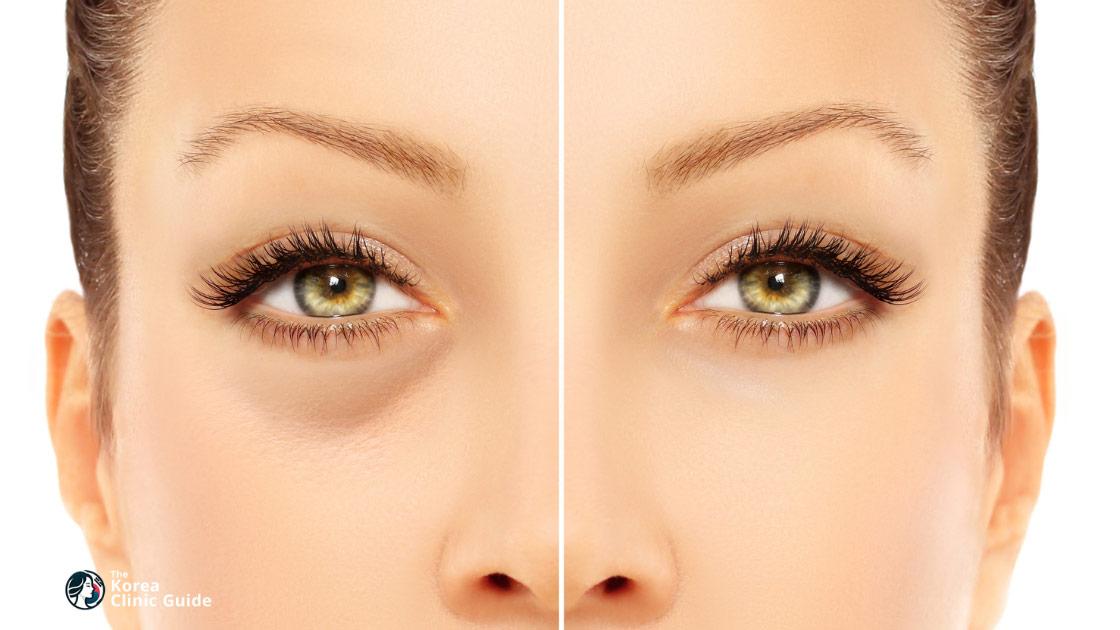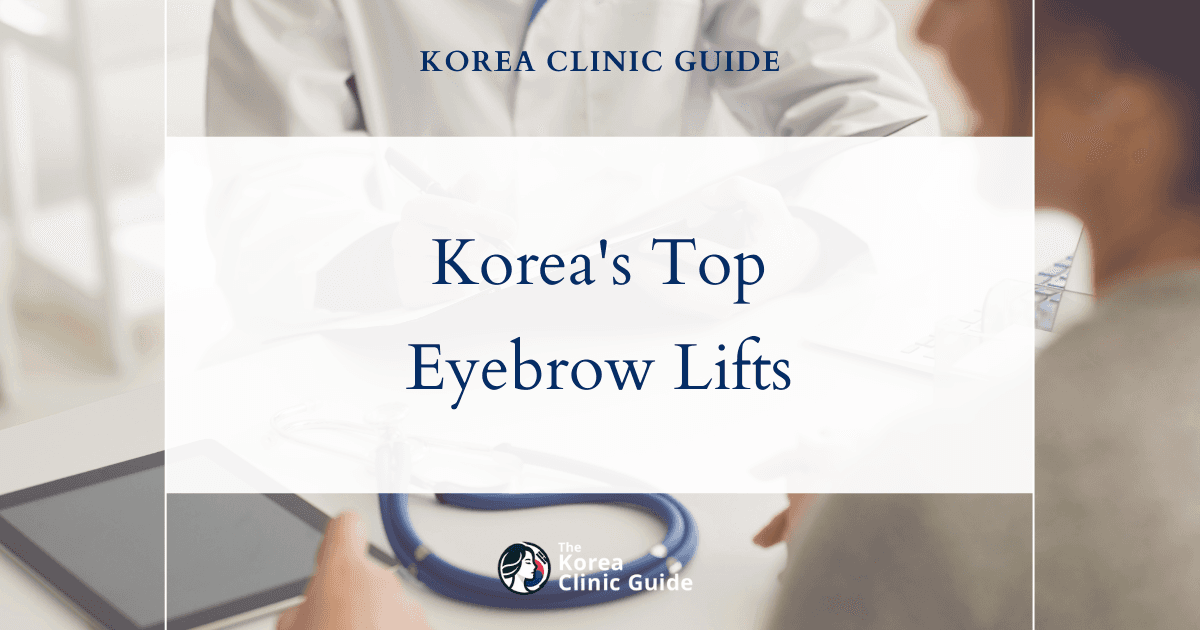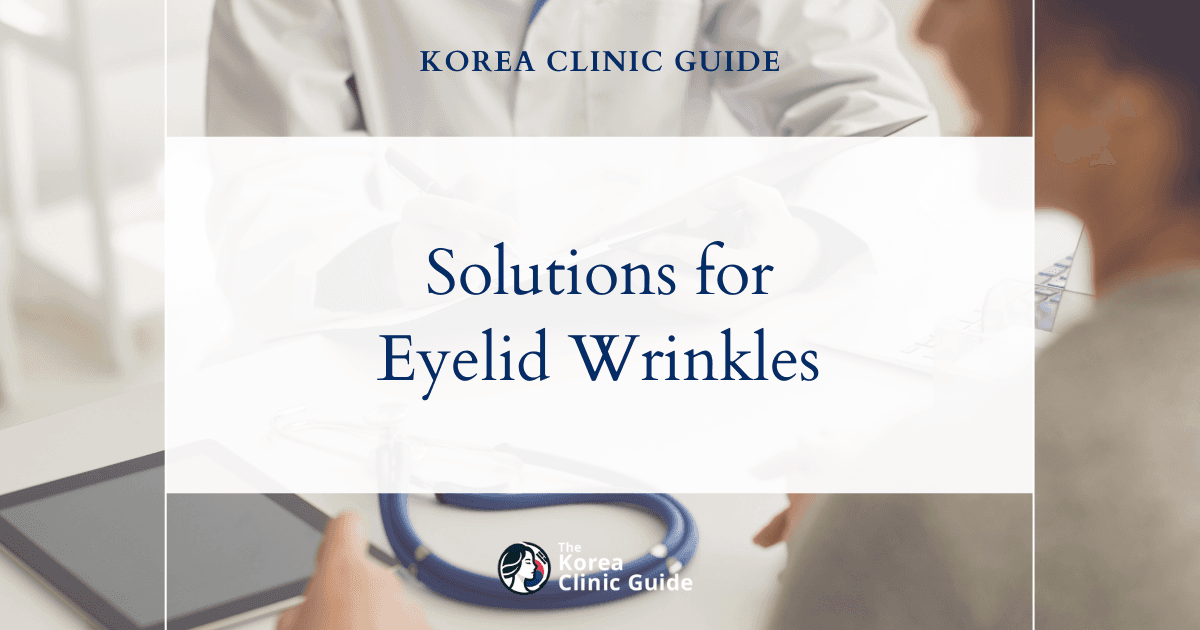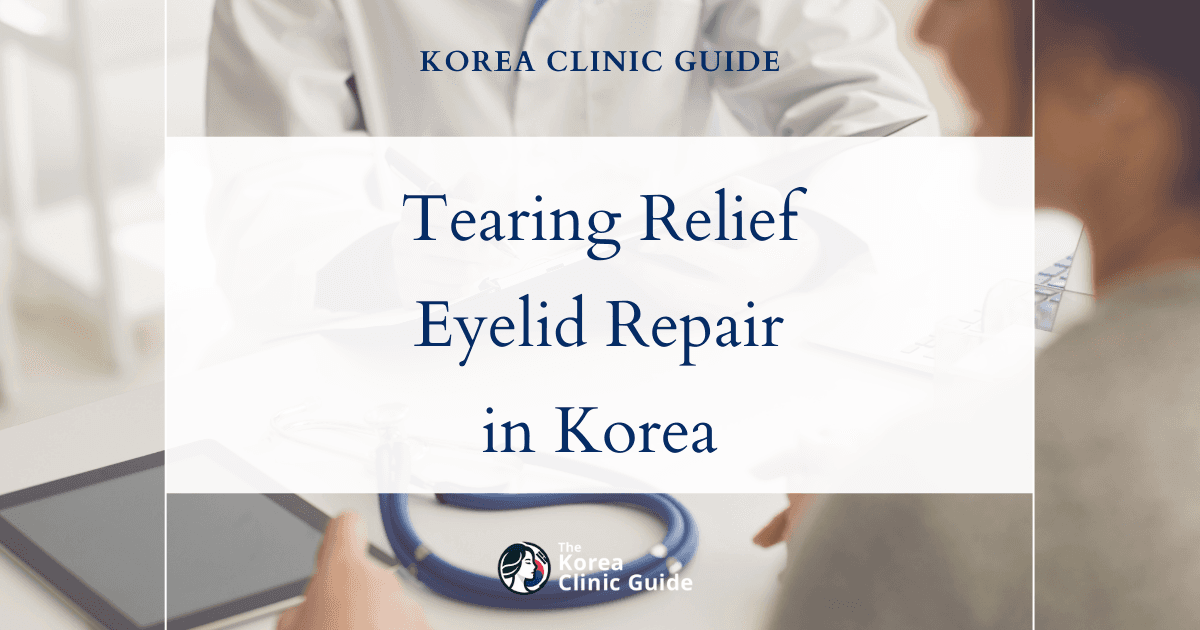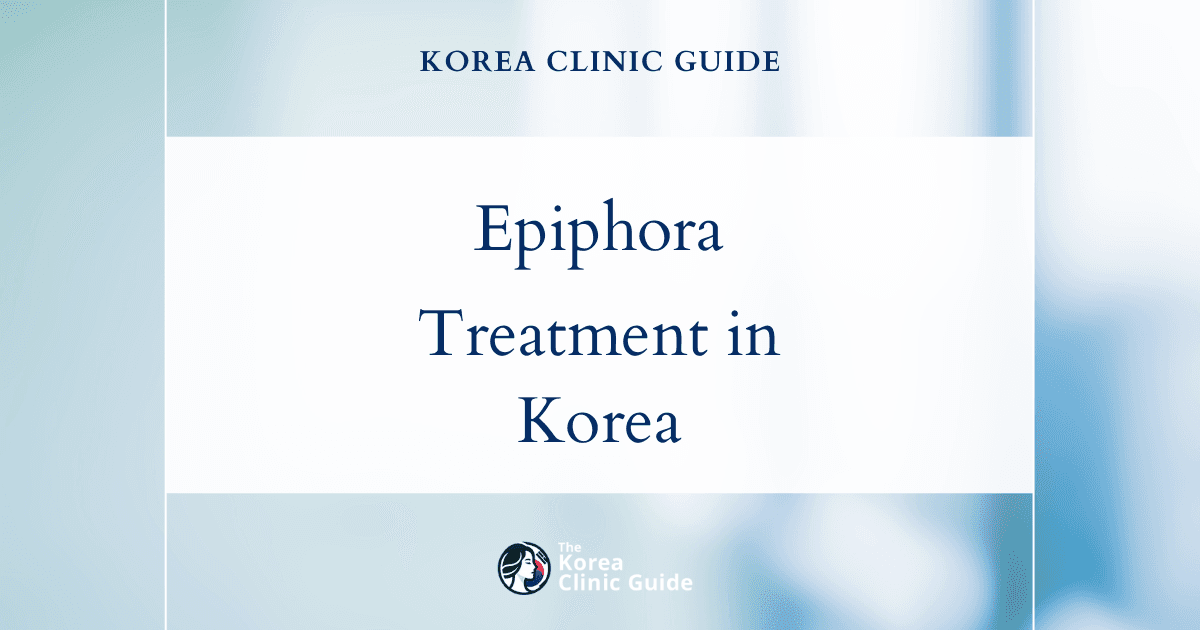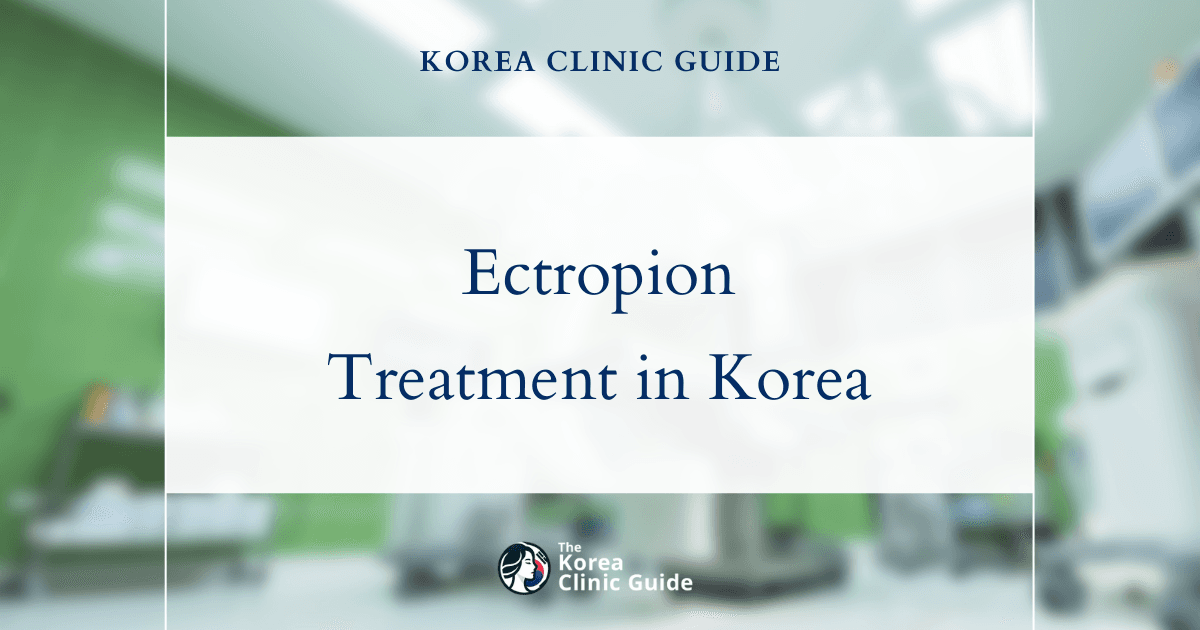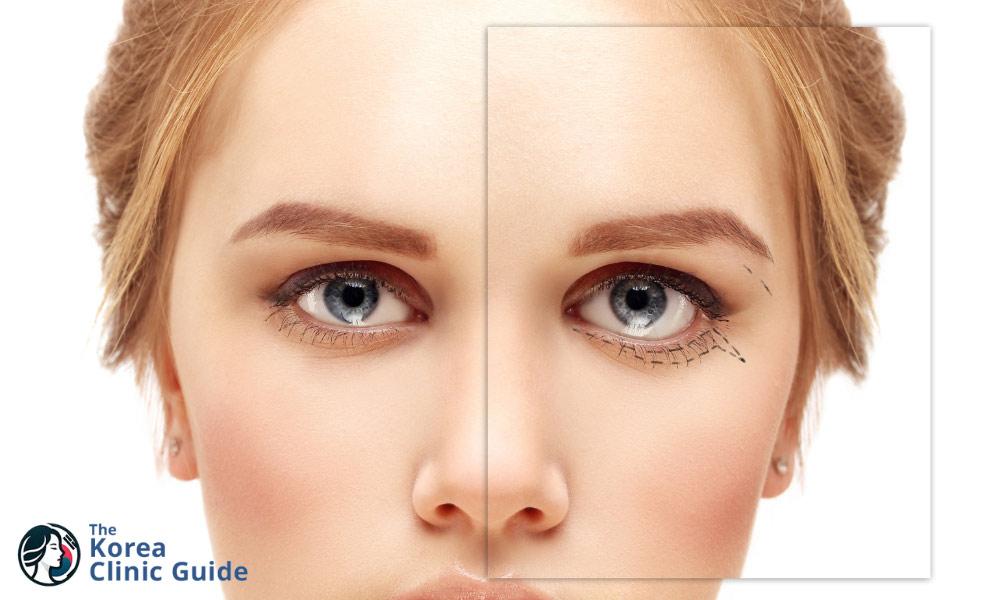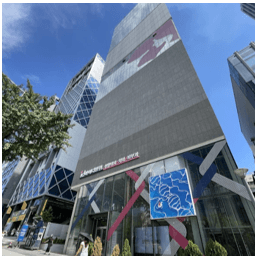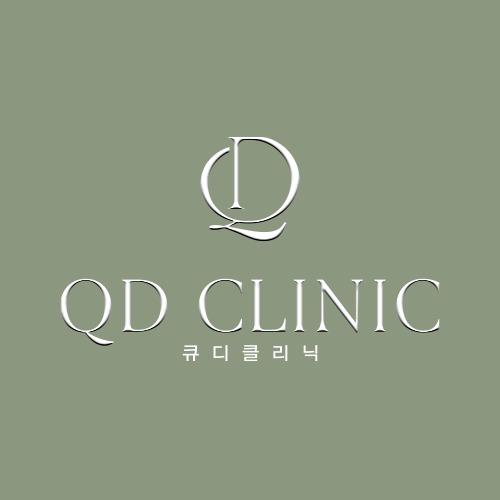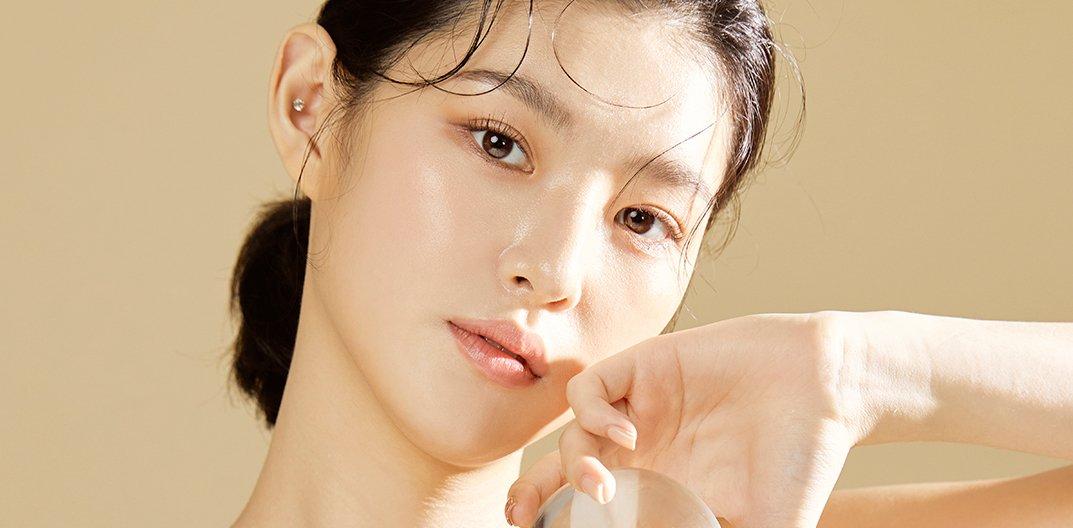Medical Tourism Blog
Eyelid Retraction Repair in Korea | Best Clinics, Costs, Procedure Types & More

Table of contents
- What Is Eyelid Retraction Repair?
- Best Clinics in Korea for Eyelid Retraction Repair
- Getting Eyelid Retraction Repair in Korea
- Cost of Eyelid Retraction Repair in Korea
- Alternatives to Eyelid Retraction Repair
- Conclusion
Considering treatment in Korea? Everything you need to know e.g. — how to avoid scams, visas, interpreters, recovery tips — in our Medical Tourism Master Guide. Plan with confidence in minutes, not weeks!
Have you ever felt the discomfort or dissatisfaction of eyelid retraction? In Korea, a booming hub for advanced ophthalmic surgery, eyelid retraction repair is offering transformative solutions that promise both enhanced vision and facial aesthetics.
What Is Eyelid Retraction Repair?
Eyelid retraction repair is a specialized surgical procedure aimed at correcting the condition known as eyelid retraction. This condition occurs when the upper or lower eyelid is pulled away from its normal position and sits higher on the eyeball than desired. Eyelid retraction can affect one or both eyes, leading to functional and aesthetic concerns such as excessive exposure of the eye, dryness, irritation, and impaired vision.
Causes of Eyelid Retraction
Eyelid retraction can be caused by several factors, with thyroid eye disease (TED), also known as Graves' ophthalmopathy, being one of the most common causes. This autoimmune condition causes inflammation and swelling of the eye muscles and tissues, leading to the retraction of the eyelids. Other causes of eyelid retraction include trauma, previous eyelid surgery, congenital defects, and less commonly, scarring or tissue shortening due to conditions like facial palsy or chronic inflammation.
Goals of the Procedure
The primary goal of eyelid retraction repair is to restore the eyelids to their normal anatomical position, thereby enhancing both functional and aesthetic outcomes. Correcting eyelid retraction helps protect the cornea, improves eye lubrication, alleviates symptoms of discomfort, and results in a more natural and symmetrical appearance of the eyes.
Surgical Techniques
Several surgical techniques can be utilized in eyelid retraction repair, and the choice of method largely depends on the underlying cause of the retraction, the severity, and whether the upper or lower eyelid is affected.
Upper Eyelid Retraction Repair
For upper eyelid retraction repair, surgeons often employ procedures such as:
- Lengthening Techniques: These involve adding a spacer or graft to increase the posterior lamellar length of the eyelid. Common materials used include autologous tissue grafts, such as hard palate or ear cartilage, or synthetic materials like polytetrafluoroethylene. Spacer grafts help in repositioning and lowering the eyelid to its normal position.
- Mullerectomy: A surgical approach where a portion of Müller's muscle, a muscle responsible for eyelid elevation, is removed or weakened to lower the eyelid margin.
- Lateral Tarsal Strip: This technique involves repositioning or tightening the lateral canthal tendon to improve eyelid position and stability.
Lower Eyelid Retraction Repair
For lower eyelid retraction, techniques may include:
- Midface Lifting: Elevation of the cheek and associated tissues can support the lower eyelid and correct retraction.
- Spacer Grafts: Similar to upper eyelids, spacer grafts may be used to increase vertical support for the lower eyelid.
- Internal or External Approaches: Depending on the case, surgeons may choose to approach the eyelid from the inside (transconjunctival) or outside (transcutaneous) to release scar tissue or tighten the eyelid.
Recovery and Postoperative Care
Post-surgery, patients are typically advised on specific care instructions to support healing and optimize results. These may include:
- Cold Compresses: To reduce swelling and bruising.
- Medications: Antibiotic ointments and, in some cases, oral medications to prevent infection and manage discomfort.
- Activity Restrictions: Avoiding strenuous activities and protecting the eyes from trauma or severe environmental conditions.
The recovery period varies depending on the extent of the surgery and individual healing responses but generally ranges from a few weeks to several months for complete resolution of swelling and stabilization of the eyelid position.
Eyelid retraction repair is a delicate procedure requiring specialized expertise to address both functional and cosmetic needs effectively. Specialists in oculoplastic surgery or ophthalmology, particularly those with experience in eyelid disorders, are often best suited for performing this surgery.
Who is Eyelid Retraction Repair for?
-
Individuals with Graves' Disease: Patients suffering from Graves' disease often experience eye symptoms that lead to eyelid retraction, making them potential candidates for the repair procedure.
-
Patients with Thyroid Eye Disease: Those diagnosed with thyroid eye disease can benefit from eyelid retraction repair due to its role in alleviating symptoms associated with eyelid malposition.
-
People Experiencing Eyelid Trauma: Individuals who have suffered trauma or injury to the eye region that results in eyelid retraction may seek surgical repair for functional and aesthetic reasons.
-
Post-surgical Patients: Those who have undergone previous eye surgeries, such as blepharoplasty, that inadvertently resulted in eyelid retraction might require corrective surgery.
-
Individuals with Congenital Eyelid Malformations: People born with certain congenital conditions leading to retracted eyelids may need surgical correction to improve eyelid function and appearance.
-
Patients with Chronic Eyelid Inflammation: Chronic inflammation of the eyelid can lead to scarring and retraction, and these patients may benefit from surgical intervention to restore normal eyelid position.
-
People Seeking Aesthetic Improvement: Individuals unhappy with the appearance of their eyelids due to retraction may opt for repair to achieve a more balanced and harmonious facial look.
Best Clinics in Korea for Eyelid Retraction Repair
Listed below are the best clinics in Korea for eyelid retraction repair:
| Clinic Name | Key Features | Special Techniques |
|---|---|---|
| THEPLUS Plastic Surgery | Four-floor, fully integrated facility (consultation, surgery, post-operative skincare); surgeon-clinician researchers who publish and lecture; safety-focused, evidence-based practice with clear, personalized communication; highly experienced team with over a decade in practice; patient satisfaction and meticulous standards; comprehensive setting for complex eyelid concerns | Precision- and balance-focused eyelid retraction repair; double eyelid surgery, ptosis correction, canthoplasty, blepharoplasty; emphasis on harmonious facial balance |
| Made Young Plastic Surgery | 15 years of exclusive eye surgery by Dr. Park Byung-Chan; premium, safety-first system; renowned for natural, beautiful results; direct consultation and diagnosis by a verified medical team averaging over 15 years’ experience; full-time board-certified anesthesiologists; 1:1 dedicated monitoring; cross-check emergency response system; full CCTV transparency; separate, dedicated aftercare center; 2022 Korea No.1 Award and Korea Customer Satisfaction 1st Place; recognized by the Korean Society of Plastic and Reconstructive Surgeons and the Minimally Invasive Aesthetic Surgery Society | Eyelid Retraction Repair restoring natural eyelid position and harmony (even on the day of surgery); tailored incision lines, double eyelid height, eyelid thickness, and overall image; cutting-edge techniques blending refined Korean aesthetic ideals |
| SH Clinic | Multi-specialty center in Sinsa (stem-cell science, gynecology, aesthetic dermatology, plastic surgery); personalized, comprehensive plans via SH Stem Cell Center; safety-focused, physician-led care; meticulous planning for balanced, natural aesthetics; one-stop convenience with streamlined evaluation, procedure, and follow-up; tailored, multidisciplinary treatment plans for complex eyelid cases | Upper and lower blepharoplasty; regenerative stem-cell–based care; physician-guided lasers and medical skincare; laser lifting, skin boosters, Botox, dermal fillers, thread lifts, face contouring, facelifts, liposuction; stem cell injections; HIFU |
THEPLUS Plastic Surgery
THE PLUS Plastic Surgery, located in Garosu-gil, Gangnam, Seoul, delivers world-class care in a four-floor, fully integrated facility that streamlines consultation, surgery, and post-operative skincare. Its surgeons are active clinician-researchers who publish in journals and textbooks and lecture at domestic and international symposia, reflecting a commitment to safety, evidence-based practice, and clear, personalized communication. A team of highly experienced professionals with over a decade in practice underpins the clinic’s focus on patient satisfaction and meticulous standards.
For patients considering eyelid retraction repair, THE PLUS offers a philosophy and skill set tailored to the precision and balance required around the eyes. Dr. Kim Taek Kyun, a board-certified plastic surgeon and global society member recognized for award-winning research on 3D implants, is a leading expert in rhinoplasty and facial contouring who emphasizes harmonious facial balance; Dr. Jeong Jae Yong, President of the Korean Society of Plastic Surgeons, blends function and beauty and regularly educates peers worldwide. With established experience in eye procedures including double eyelid surgery, ptosis correction, canthoplasty, and blepharoplasty—and a track record of academic leadership and patient-first care—THE PLUS provides a rigorous, comprehensive setting for complex eyelid concerns.
You can check out their website here: THEPLUS Plastic Surgery Website
Made Young Plastic Surgery
Made Young Plastic Surgery is Korea’s premier choice for Eyelid Retraction Repair, combining Dr. Park Byung-Chan’s 15 years of exclusive eye surgery experience with a premium, safety-first system to restore natural eyelid position and harmony—even on the day of surgery. Renowned for natural, beautiful results, Dr. Park tailors every detail—incision lines, double eyelid height, eyelid thickness, and the overall image—to correct retraction with seamless balance and symmetry, while a genuine, patient-centered approach ensures direct consultation and diagnosis by a verified medical team averaging over 15 years of experience. The clinic’s comprehensive safety infrastructure includes full-time board-certified anesthesiologists, 1:1 dedicated monitoring, a cross-check emergency response system, and full CCTV transparency, all supported by a separate, dedicated aftercare center for complete, systematic recovery. Distinguished by the 2022 Korea No.1 Award and Korea Customer Satisfaction 1st Place, and recognized by the Korean Society of Plastic and Reconstructive Surgeons and the Minimally Invasive Aesthetic Surgery Society, Made Young blends refined Korean aesthetic ideals with cutting-edge techniques to deliver the most natural, confident outcomes in eyelid retraction repair.
You can check out their website here: Made Young Plastic Surgery Website
SH Clinic
SH Clinic in Sinsa, Seoul is a multi-specialty medical center that brings stem-cell science, women’s healthcare, aesthetic dermatology, and modern plastic surgery together under one roof. Through the SH Stem Cell Center, patients receive personalized, comprehensive plans that range from facial rejuvenation and anti-aging to advanced regenerative therapies for serious conditions, while the SH Gynecology Clinic delivers a full spectrum of women’s health services, including vaginal rejuvenation options such as fillers, stem cell injections, HIFU treatments, vaginal tightening, and implant surgery. Complementing this, the clinic’s aesthetic dermatology and plastic surgery programs offer laser lifting, skin boosters, medical skincare, Botox, dermal fillers, thread lifts, face contouring, upper and lower blepharoplasty, facelifts, and liposuction—creating a cohesive pathway from consultation to recovery in one convenient, expert setting.
- Why it excels for Eyelid Retraction Repair:
- Integrated eyelid expertise: A modern plastic surgery program with extensive experience in upper and lower blepharoplasty provides the precise anatomical understanding required for accurate eyelid position correction.
- Regenerative medicine advantage: Access to personalized stem-cell–based care offers options designed to support tissue healing and modulate inflammation around delicate eyelid structures, helping optimize recovery and outcomes.
- Comprehensive periocular optimization: Physician-guided lasers and medical skincare can be incorporated to improve skin quality and support favorable scar maturation following surgery.
- Safety-focused, physician-led care: The clinic emphasizes monitored, protocol-driven treatment with thorough pre- and post-care counseling across services for consistent safety and support.
- Precision and natural aesthetics: A culture of meticulous planning and minimally invasive techniques aims for balanced symmetry and natural-looking eye contours.
- One-stop convenience in Sinsa: Evaluation, procedure, and follow-up are streamlined within a single, centrally located Seoul facility for efficient, coordinated care.
- Tailored treatment plans: Multidisciplinary collaboration across regenerative medicine, dermatology, and plastic surgery enables individualized strategies for complex eyelid cases and overall facial harmony.
You can check out their website here: SH Clinic Website
Getting Eyelid Retraction Repair in Korea
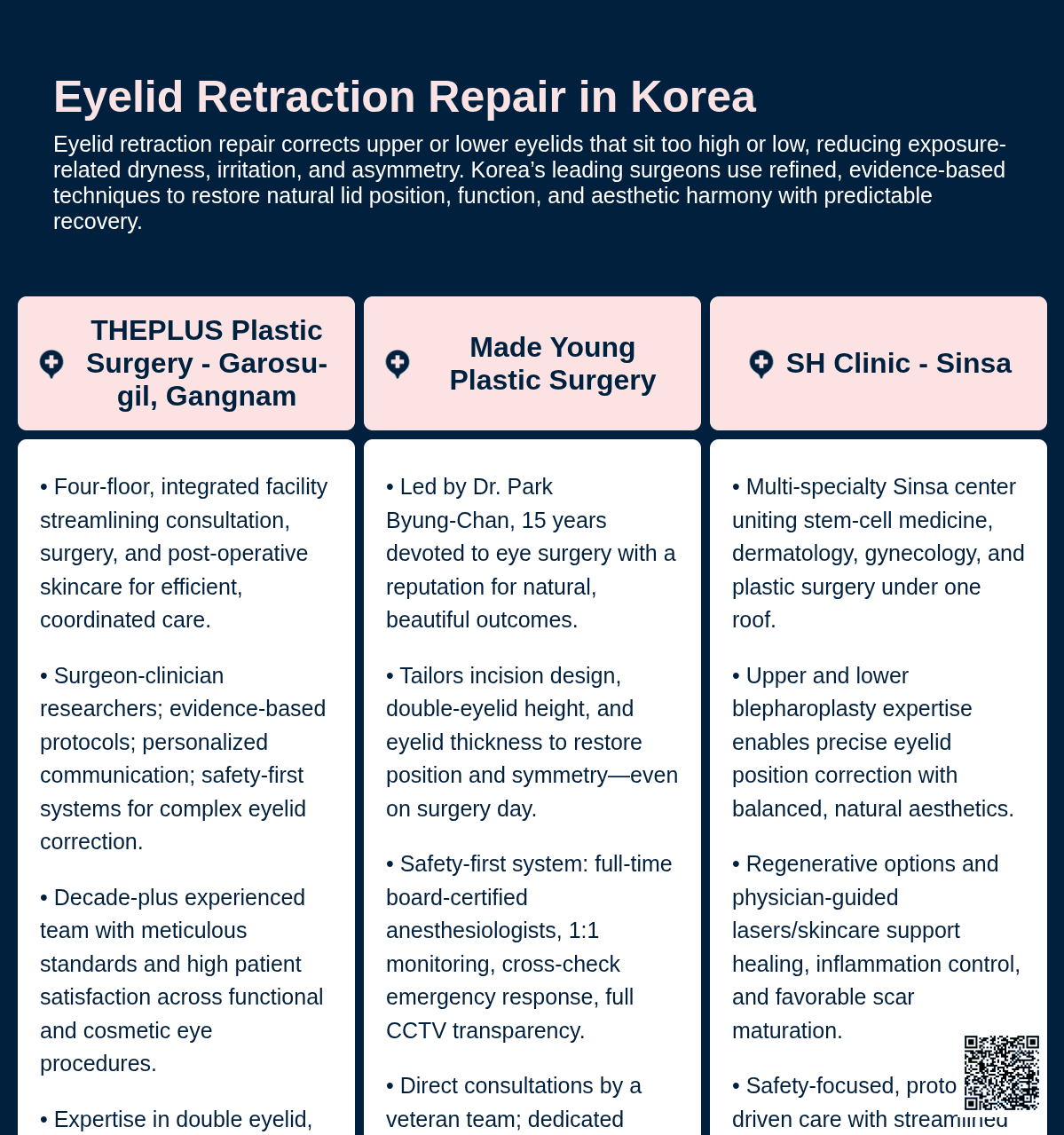
Eyelid retraction refers to a condition where the eyelid margin is abnormally positioned, often too high or too low, causing an exposed sclera that can lead to discomfort, issues with eye closure, or cosmetic concerns. This condition can affect either the upper or lower eyelids and requires precise surgical intervention to restore normal eyelid function and appearance. Korea has emerged as a hub for advanced and aesthetically focused medical procedures, including eyelid retraction repair, due to its cutting-edge technology, well-trained specialists, and competitive pricing.
Understanding Eyelid Retraction
Eyelid retraction is often associated with thyroid eye disease, trauma, previous surgeries, or congenital conditions. It commonly results in symptoms such as dry eyes, irritation, exposure keratitis, and in severe cases, corneal ulcers. Cosmetic issues can also arise, leading to self-consciousness or dissatisfaction with one’s appearance.
Preoperative Assessment
Before undergoing eyelid retraction repair in Korea, a thorough preoperative assessment is conducted. This assessment typically includes:
- Detailed Medical History: To understand any underlying conditions or previous surgeries that might affect the procedure.
- Ophthalmic Examination: Comprehensive eye and visual assessment to determine the specific nature and extent of retraction.
- Photography: Preoperative photos are taken for surgical planning and postoperative comparison.
- Discussion of Expectations: The surgeon discusses the potential outcomes, risks, and benefits of the procedure with the patient.
Surgical Techniques
Korean specialists are renowned for their skillful techniques in eyelid surgeries, ensuring both functional restoration and aesthetic improvement. Various surgical procedures can be employed, often tailored to individual needs:
-
Lower Eyelid Retraction Repair: This involves repositioning or supporting the eyelid through methods such as spacer grafts, which might use materials like ear cartilage, AlloDerm, or hard palate tissue. These grafts provide the necessary vertical lift to correct retraction.
-
Upper Eyelid Retraction Repair: This often involves recession of the muscles responsible for eyelid elevation—typically the levator muscle or Muller’s muscle. The surgeon might strategically modify these muscles to achieve the desired eyelid position, sometimes supplemented by grafts or other supportive measures.
Anesthesia and Procedure Duration
Most eyelid retraction repair surgeries in Korea are performed under local anesthesia with sedation, although general anesthesia may be an option depending on the case complexity and patient preference. The surgical duration can vary widely, often lasting from one to three hours, depending on the severity of the retraction and the complexity involved.
Postoperative Care
Successful outcomes are highly reliant on diligent postoperative care. Patients are often advised to:
- Apply Cold Compresses: To minimize swelling and bruising in the initial days following surgery.
- Use Prescribed Eye Drops and Ointments: To keep the eyes lubricated and prevent infection.
- Attend Follow-Up Appointments: Regular visits to the surgeon to monitor the healing process and make timely adjustments if necessary.
Risks and Complications
As with any surgical procedure, eyelid retraction repair carries potential risks, including infection, bleeding, asymmetry, recurrence of retraction, or undesired cosmetic outcomes. However, Korea's high surgical standards and experienced practitioners significantly mitigate these risks.
Why Choose Korea?
Korea is widely recognized for its excellence in eyelid surgeries due to several factors:
- Advanced Medical Facilities: State-of-the-art clinics and hospitals equipped with the latest technology.
- Expert Surgeons: A wealth of highly skilled surgeons with extensive experience in both functional and cosmetic eyelid procedures.
- Combining Aesthetic with Functional: Korean surgeons are particularly adept at achieving aesthetically pleasing results alongside functional restoration.
- Cost-Effectiveness: Competitive pricing, often more affordable than in Western countries, without compromising on quality.
Choosing eyelid retraction repair in Korea thus ensures a combination of cutting-edge medical care with renowned aesthetic expertise, providing patients with confidence in their surgical outcomes.
Cost of Eyelid Retraction Repair in Korea
Eyelid retraction repair is a specialized surgical procedure aimed at correcting eyelid malposition, which can occur due to a range of reasons such as previous eyelid surgeries, trauma, or thyroid eye disease. While this procedure is available in several countries, the cost can vary significantly based on location, healthcare system, and specific surgical practices.
In South Korea, renowned for its advanced cosmetic surgery techniques and highly skilled surgeons, the cost for eyelid retraction repair is generally more affordable compared to Western countries. On average, the procedure may cost between $2,000 to $4,000 USD depending on the complexity of the case and the reputation of the surgical clinic. Korea's competitive pricing, combined with its robust medical infrastructure and experienced surgeons, makes it an attractive destination for medical tourists seeking eyelid retraction repair.
In contrast, in the United States, the cost of eyelid retraction repair can be significantly higher. The average price often ranges from $5,000 to $10,000 USD or more, depending on factors such as the surgeon's expertise, the location of the clinic, and whether additional corrective procedures are required. The higher cost in the US is partly attributed to the overall healthcare expenses and the demand for cosmetic and reconstructive eyelid surgeries.
Other countries might offer varying price points for eyelid retraction repair. For instance, in European countries, such as the United Kingdom or Germany, the cost can fluctuate between $4,000 and $8,000 USD. In countries like Thailand or India, known for medical tourism, the prices are usually competitive, often ranging from $1,500 to $3,500 USD.
Overall, patients seeking eyelid retraction repair procedures have a spectrum of options globally, with South Korea positioned as a cost-effective choice, offering top-tier surgical skills and favorable prices compared to the United States and some European countries.
Alternatives to Eyelid Retraction Repair
When considering treatment options for eyelid retraction, it's important to explore a range of potential alternatives. Here are three suitable alternatives that patients can consider alongside Eyelid Retraction Repair:
1. Levator Muscle Recession
Levator muscle recession is a surgical procedure primarily aimed at alleviating eyelid retraction by adjusting the position of the levator muscle, which is responsible for lifting the eyelid. In cases where the muscle's overactivity causes eyelid retraction, this procedure involves weakening or repositioning the muscle to allow the eyelid to close more naturally. By reducing the muscle's strength, levator recession can help achieve a more desirable eyelid position, thereby improving both the functionality and aesthetics of the affected area.
2. Botulinum Toxin Injection
Botulinum toxin injections, commonly known for their cosmetic use in reducing wrinkles, can also be utilized as a non-surgical approach to managing eyelid retraction. By injecting the toxin into specific areas around the eyelid, the overactive muscles that cause retraction can be temporarily weakened. This results in a reduction of the eyelid elevation, offering symptomatic relief and aesthetic improvement. The effects of botulinum toxin injections are temporary, usually lasting a few months, making it a less permanent but minimally invasive alternative to surgery.
3. Autogenous Fat Grafting
Autogenous fat grafting involves harvesting fat from another part of the patient's body and injecting it into the eyelid area to correct retraction. This procedure not only helps fill in areas of volume loss but also lowers the position of the eyelid by providing additional weight. Fat grafting is a favorable option for patients seeking a more natural approach, using their own body tissues to alter the eyelid position. It also provides the dual benefit of volumizing the area for a more balanced facial appearance.
These alternatives offer varying degrees of intervention and outcomes, allowing patients to select an option based on their specific needs and preferences alongside professional medical advice.
Conclusion
In conclusion, eyelid retraction repair in Korea offers a unique blend of advanced medical technology, skilled surgeons, and personalized patient care, making it a sought-after destination for individuals seeking this specialized procedure. With its emphasis on precision and aesthetically pleasing outcomes, Korea continues to set high standards in the field of ophthalmic plastic surgery. Whether driven by functional needs or cosmetic preferences, patients can expect comprehensive care that combines traditional expertise with innovative techniques, resulting in improved appearance and enhanced quality of life. The increasing interest from international patients highlights Korea's reputation as a global leader in eyelid surgery, ensuring that those who choose to undergo eyelid retraction repair in the country can do so with confidence and assurance of optimal results.
